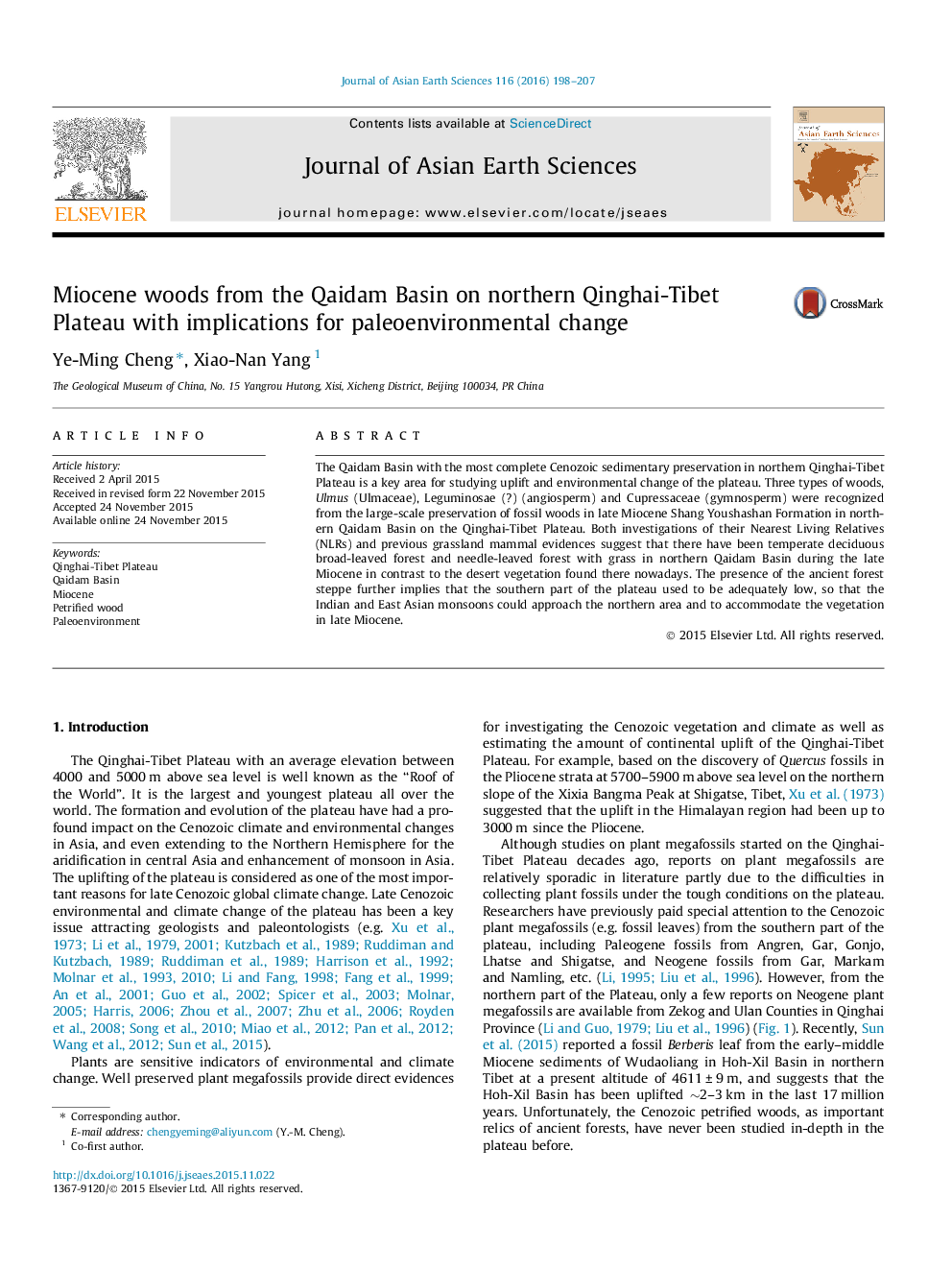| کد مقاله | کد نشریه | سال انتشار | مقاله انگلیسی | نسخه تمام متن |
|---|---|---|---|---|
| 4730264 | 1640355 | 2016 | 10 صفحه PDF | دانلود رایگان |
• Massive fossil woods imply forests in north Qinghai-Tibetan Plateau late Miocene.
• Three taxa were identified first time in this area based on anatomical characters.
• There used to be temperate forest with grass in northern plateau in late Miocene.
• ASM supported the Miocene forest steppe due to an open route in the southern part.
The Qaidam Basin with the most complete Cenozoic sedimentary preservation in northern Qinghai-Tibet Plateau is a key area for studying uplift and environmental change of the plateau. Three types of woods, Ulmus (Ulmaceae), Leguminosae (?) (angiosperm) and Cupressaceae (gymnosperm) were recognized from the large-scale preservation of fossil woods in late Miocene Shang Youshashan Formation in northern Qaidam Basin on the Qinghai-Tibet Plateau. Both investigations of their Nearest Living Relatives (NLRs) and previous grassland mammal evidences suggest that there have been temperate deciduous broad-leaved forest and needle-leaved forest with grass in northern Qaidam Basin during the late Miocene in contrast to the desert vegetation found there nowadays. The presence of the ancient forest steppe further implies that the southern part of the plateau used to be adequately low, so that the Indian and East Asian monsoons could approach the northern area and to accommodate the vegetation in late Miocene.
Journal: Journal of Asian Earth Sciences - Volume 116, February 2016, Pages 198–207
